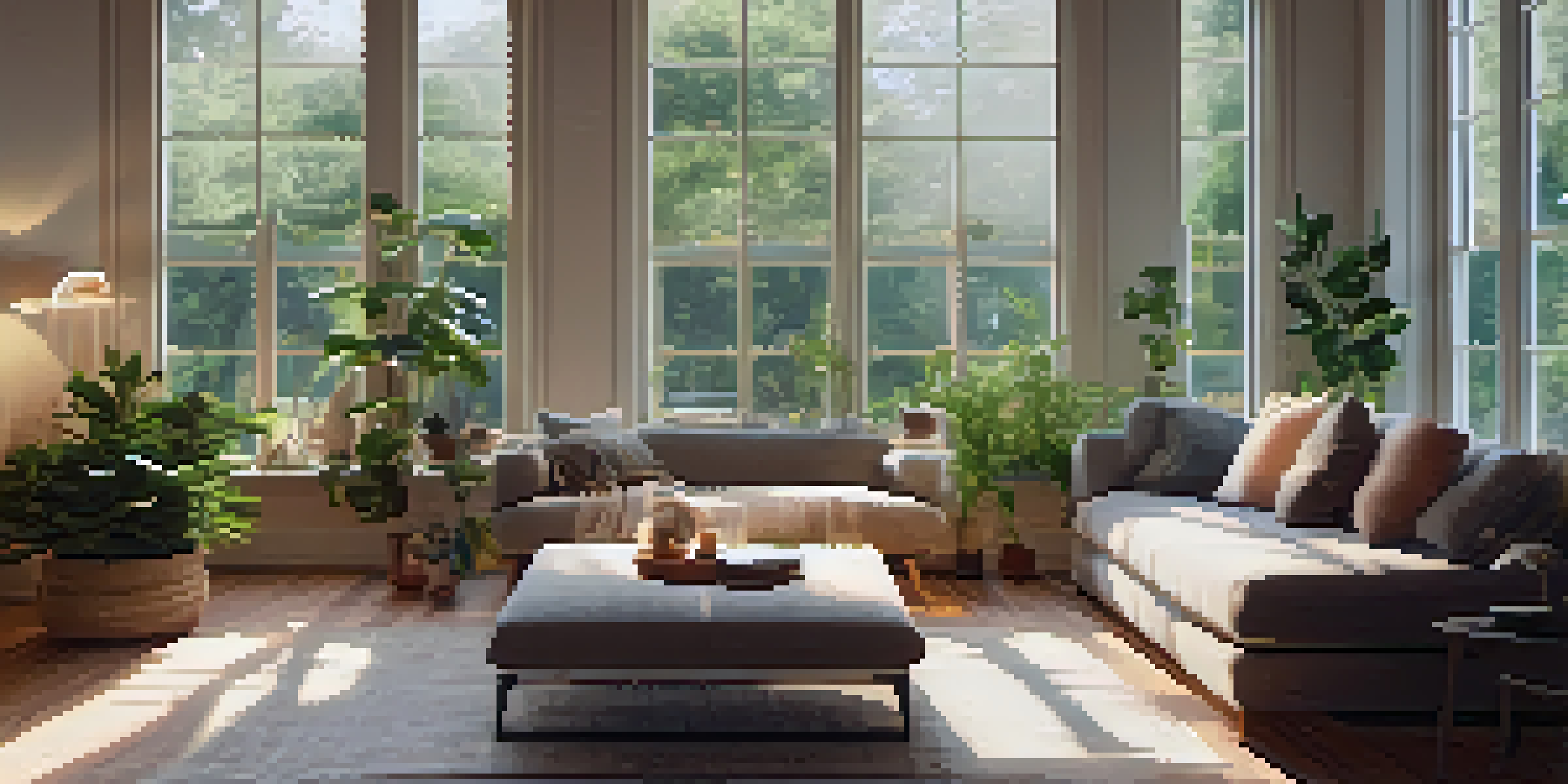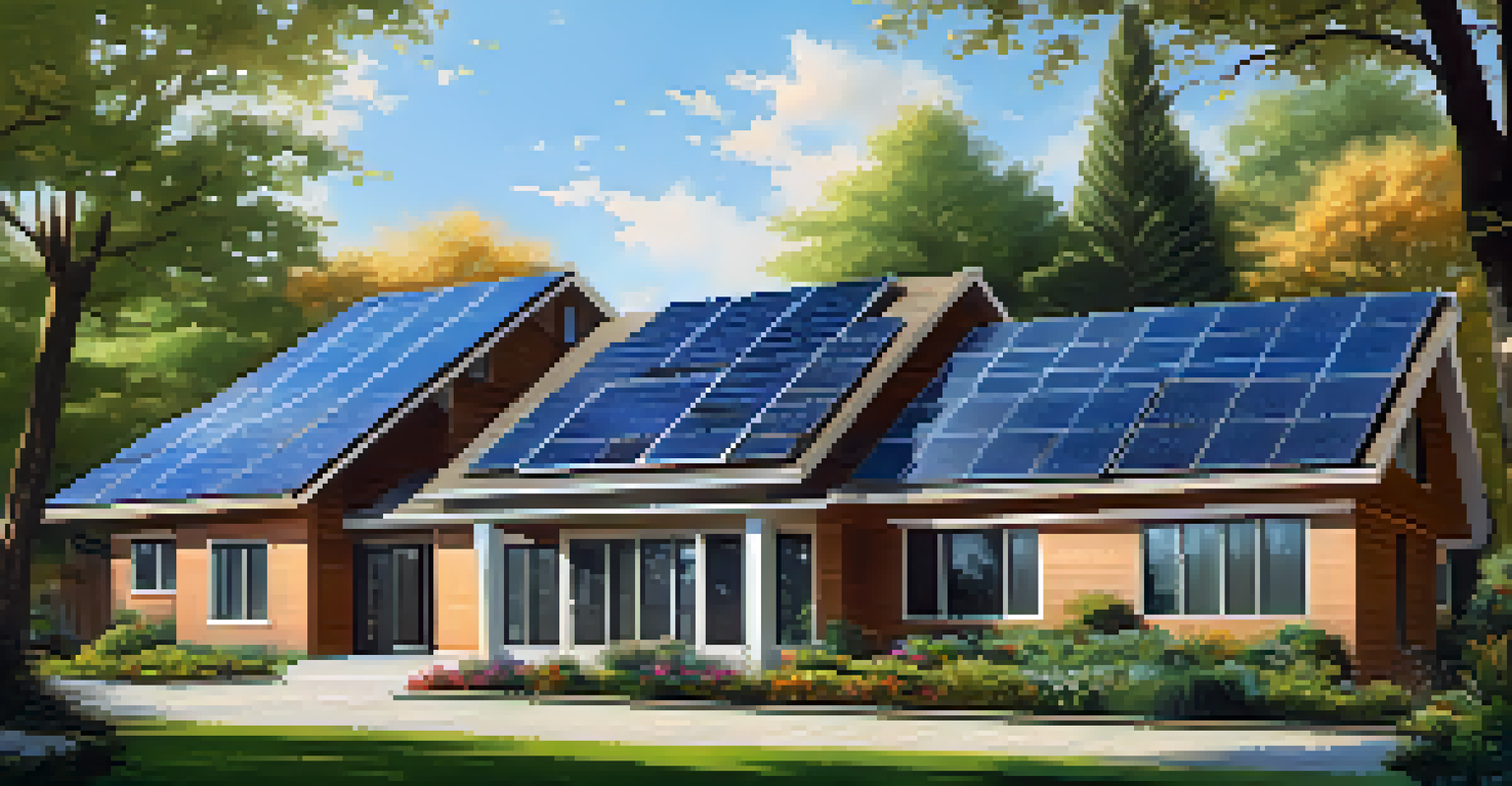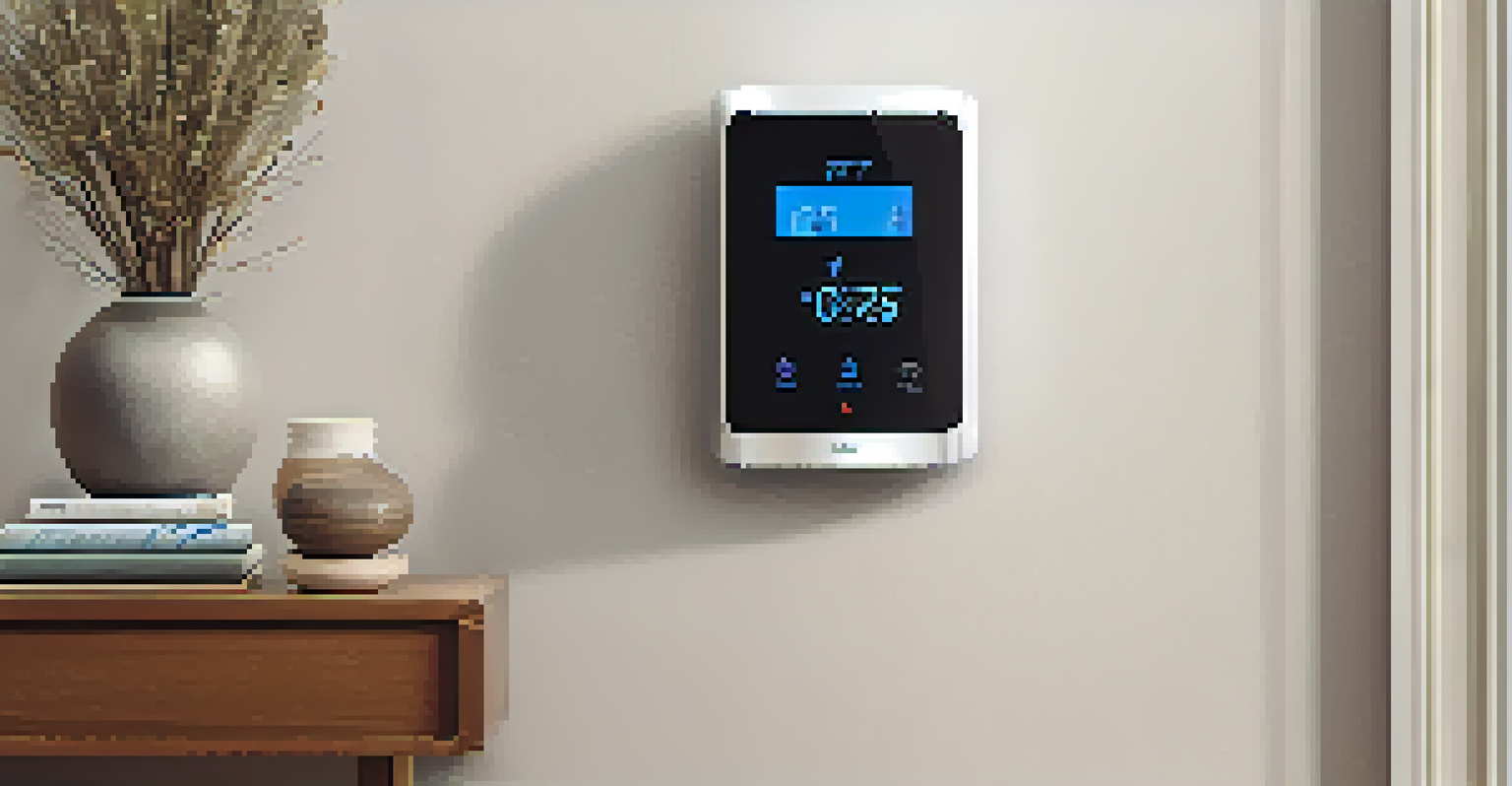How Home Upgrades Contribute to Energy Efficiency

Understanding Energy Efficiency in Your Home
Energy efficiency means using less energy to provide the same service. For homeowners, this translates into lower energy bills and a reduced carbon footprint. It's about finding smarter methods to heat, cool, and power your home without wasting resources.
Energy efficiency is doing more with less.
When we talk about energy efficiency, think of it as a way to maximize comfort while minimizing waste. For instance, a well-insulated home keeps the temperature steady without over-relying on heating or cooling systems. This not only saves money but also contributes to a healthier planet.
Upgrading to energy-efficient appliances is one of the easiest ways to start. These appliances are designed to use less energy than their traditional counterparts, which can lead to significant savings over time. Investing in energy efficiency today means enjoying comfort and savings tomorrow.
The Role of Insulation in Energy Savings
Insulation is your home's best friend when it comes to energy efficiency. It acts as a barrier, keeping warm air inside during winter and cool air during summer. This means your heating and cooling systems don’t have to work as hard, which directly translates to lower energy bills.

Think of insulation like a warm blanket on a chilly night—it keeps the warmth in and the cold out. By ensuring that your walls, attic, and floors are properly insulated, you can maintain a consistent temperature in your home without excessive energy use.
Boost Comfort with Insulation
Proper insulation keeps your home at a steady temperature, reducing energy bills and enhancing comfort.
Many homeowners overlook the importance of insulation, but it’s one of the most effective upgrades you can make. Whether you choose spray foam, fiberglass batts, or blown-in cellulose, each option offers unique benefits that can significantly enhance your home's energy efficiency.
Energy-Efficient Windows: A Smart Investment
Windows are another critical area where energy efficiency can shine. Upgrading to double or triple-pane windows significantly reduces heat loss in winter and heat gain in summer. This means your HVAC system works less, saving you money and energy.
The greatest threat to our planet is the belief that someone else will save it.
Imagine sitting by a window on a sunny day, enjoying the natural light without feeling the heat pouring in. Energy-efficient windows come with special coatings that reflect heat while allowing light to enter, creating a comfortable indoor environment year-round.
While the initial investment in energy-efficient windows might seem high, the long-term savings on your energy bills can make it worthwhile. Plus, they can enhance your home's curb appeal and resale value, making them a smart addition to any upgrade plan.
Smart Thermostats for Optimal Control
Smart thermostats are revolutionizing how we manage our home's energy use. These devices learn your schedule and preferences, allowing them to adjust the temperature automatically. This not only enhances comfort but also significantly reduces energy consumption.
Imagine coming home to a perfectly heated or cooled space without ever having to touch a dial. With features like remote control via smartphone apps, you can adjust your home’s temperature from anywhere, ensuring energy is used only when needed.
Smart Thermostats Save Energy
Smart thermostats learn your habits and optimize temperature settings, leading to significant energy savings.
Investing in a smart thermostat can lead to savings of up to 10-15% on heating and cooling costs. It’s a simple upgrade that pays off quickly, making it a favorite choice for homeowners looking to improve energy efficiency.
Energy-Efficient Lighting for a Brighter Future
Switching to energy-efficient lighting can have a significant impact on your energy bills. LED bulbs, for example, use up to 80% less energy than traditional incandescent bulbs and last significantly longer. This means fewer replacements and a lower overall energy expenditure.
Picture walking into a room filled with bright, inviting light without worrying about your electricity bill skyrocketing. LEDs not only provide excellent illumination but also come in various styles, making them a versatile choice for any décor.
Making the switch to energy-efficient lighting is one of the easiest upgrades you can do. It’s a small change that can lead to big savings, and with the added benefit of longer-lasting bulbs, it’s a win-win for both your wallet and the environment.
Solar Panels: Harnessing the Power of the Sun
Installing solar panels is a powerful way to increase your home's energy efficiency while reducing reliance on traditional energy sources. By converting sunlight into electricity, solar panels can significantly lower your monthly energy bills and even make you money through net metering.
Imagine generating your own electricity while also reducing your carbon footprint. Solar energy is renewable and abundant, making it a sustainable choice for homeowners wanting to make a positive impact on the environment.
Solar Panels Cut Energy Costs
Installing solar panels can lower your monthly energy bills while promoting sustainable energy use.
Though the upfront cost of solar panels can be high, various incentives and financing options exist to help make them more accessible. Over time, the savings on your energy bills can far outweigh the initial investment, making solar panels an attractive upgrade.
Landscaping for Energy Efficiency
Believe it or not, landscaping can play a significant role in your home's energy efficiency. Strategically planted trees and shrubs can provide natural shading, reducing the amount of heat that enters your home during the hot summer months. This means less reliance on air conditioning and lower energy costs.
Think of your yard as a natural air conditioner. By planting deciduous trees on the sunny side of your home, you can block the sun's rays in summer while allowing sunlight to warm your home in winter after the leaves fall.

Incorporating energy-efficient landscaping is not just about aesthetics; it's a practical upgrade that contributes to overall energy savings. A well-planned landscape can create a more comfortable living environment while also enhancing your home's beauty.